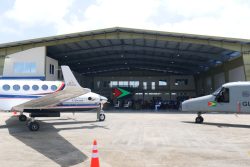By Brian T. Mullis
The tourism sector is widely recognized globally as a vital contributor to job and wealth creation, economic development, environmental protection, and poverty alleviation. Well-designed and managed tourism is renowned for its potential to contribute to the preservation of the natural and cultural heritage upon which it depends, empower host communities, generate trade opportunities and foster peace and intercultural understanding. This is, in part, why the United Nations World Tourism Organization (UN WTO) and their member states formally recognized the actual and potential contribution of tourism to all 17 Sustainable Development Goals (SDGs).
In order to realize the potential of the travel and tourism sector, inter-ministerial and multi-sectoral collaboration is required — among stakeholders from the national to local level — in the design and development of policies, national and regional strategies, and action plans will enable the sector to take advantage of the interlinkages and cross-cutting economic impacts of tourism and achieve the SDGs. This is beginning to happen in Guyana. The Government of Guyana is actively pursuing a ‘green’ agenda with the impending implementation of the Green State Development Strategy (GSDS).
The Guyana Tourism Authority (GTA) is actively aligning its strategic action plan and programmatic activities with the GSDS. This includes incorporating sustainable tourism best practice into all aspects of programming. To ensure a more coordinated approach to tourism development and amplify the positive impacts associated with tourism, the Authority is also aligning its priorities and collaborating with sister governmental agencies, the tourism private sector, development agencies and nonprofits.
Tourism is an Export Industry
Travel and tourism is an export industry when it provides services to international visitors and draws in spending from abroad. The sector has direct and multiplier effects on other sectors and industries (e.g., agriculture, construction, entertainment, transportation), and represents a substantial share of total exports for many countries around the world, forming an essential component of global trade.
For the year 2016, the World Travel & Tourism Council calculated the total contribution of travel and tourism at 7.3% of Guyana’s GDP and estimated it will continue to rise. Although it is difficult to measure tourism’s contribution to GDP due to the diversity of its value chain and the mainstream industries that it cuts across, governmental, community and private sector leaders across Guyana are beginning to recognize tourism as an export industry with potential for high growth.
According to the UN WTO, the global average spending per international traveler per trip is US$1,100. The extremely conservative assumption that the average visitor spends as little as US$500 in the local economy places tourism third among Guyana’s top export earners. According to the Bank of Guyana Annual Report 2017, earnings for the top 5 export industries last year were: Gold at US$817.5M, Rice at US$201.0M, Bauxite at US$102.3M, Sugar at US$48.5M, and Timber at US$35.8M. With 247,302 visitor arrivals in 2017, tourism generates at least US$123.6M in direct economic benefits in Guyana. This makes tourism worthy of the special support and attention granted to other key economic sectors.
With the 15% travel tax in place on international airfares, revenue from travel directly benefits the Government and thus the residents of Guyana. In addition to the tourism tax, the related expenditures have a direct economic impact in the areas of domestic airfare and ground transportation, tourism accommodation and tours, food and beverage, and shopping. Indirect economic impacts include, for example, capital investments in tourism within all sectors that are directly involved in the tourism industry and the domestic goods and services purchased by the domestic travel sector. Induced economic impacts represent the wider contribution of tourism through the expenditures of those who are directly or indirectly employed by the tourism sector. This, along with the fact that traveling within Guyana is not inexpensive, is why the estimated US$500 per visitor expenditure is extremely conservative.
Tourism Visitation and Visitor Spending are Growing
For the first nine months of 2018, visitor arrivals to Guyana increased 17.46% over 2017. This includes an increase in diaspora visitation (3.8%), an increase in leisure vacation travel (23.8%), and increases within all of Guyana’s core source markets: US (6.6%), Canada (2%), UK (10.3%), and Germany (4.8%). This also includes a marked increase in travel from Cuba (86%) for shopping and for processing U.S. visas. It is estimated that the typical visitor from Cuba stays four to six days and spends US$2,000 to US$3,000 per visit on shopping purchases, lodging, food and other necessities, resulting in US$85 million being generated annually for Guyana’s GDP from Cubans alone.
Based on historical trends, there will be at least 500,000 visitor arrivals by 2030. Considering the growth in international tourism arrivals in 2018, the anticipated continued growth with the oil and gas industry and the international growth of the travel and tourism sector in general, it is possible that Guyana will attract upwards of 500,000 visitors as early as 2025. With the GTA’s focused efforts on bringing Destination Guyana into the global tourism marketplace within its core markets by promoting its strengths in authentic adventure, nature-based and cultural tourism experiences, the average visitor expenditure will increase as well. The average expenditure per international traveler in nature-based and adventure tourism is US$1,149 per trip, cultural heritage is US$1,319 per trip, and responsible traveler is US$1,749 per trip.
With the impending growth, the GTA is increasingly placing more emphasis on product development. In the build up to the impending growth, the greater the investment in travel and tourism-related product development and infrastructure, the greater the tourism sector can contribute to the economic transformation that prioritizes a ‘green’ agenda.
About the Guyana Tourism Authority
The Guyana Tourism Authority (GTA), operating under the Ministry of Business, is a semi-autonomous governmental organization responsible for developing and promoting sustainable tourism in Guyana. Its mission is to develop and promote sustainable tourism in Guyana through collaboration with sister agencies and the tourism private sector in order to maximize local socio-economic and conservation outcomes and improve the visitors’ experience.
Brian Mullis is the Director of the Guyana Tourism Authority.








